Natural and Spectral Gamma Ray Logs
Estimating the Shale Volume Content and Lithology From Natural Gamma Ray Logs
Since radioactivity is normally associated with the clay minerals that constitute shales in geological formations, it is a common practice to use the relative natural gamma ray deflection as a shale volume indicator, often termed Vshale or Vsh. The simplest method is to rescale linearly, from a 0% to a 100% shale volume, the gamma ray between its minimum and maximum values within the logged section of one consistent geological zone containing both clean sandstones or clean carbonates and thick shales. The technique is easy and straightforward, and can sometimes give reasonably accurate results for deep and geologically old reservoirs.
The shale volume calculation process should always be conducted on a well by well basis, as the absolute gamma ray readings may not be consistent between wells, even those in the same field. This inconsistency can be caused by variations in tool conveyance methods, and thus different tool positions within the wellbore, variations in drilling mud weights, and different logging service companies being used for the various gamma ray log data acquisitions.
Normally, the LWD natural gamma ray sensor is positioned as closely as possible to the bit at the base of the bottomhole assembly (Figure 1) so that lithology changes can be detected by the gamma ray logging tool very soon after their penetration by the bit.
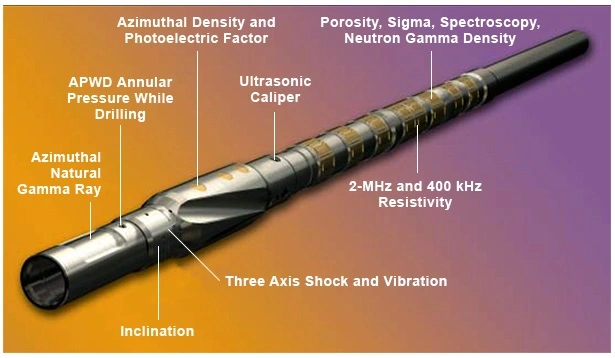
Gamma Ray Index
In many case studies, the linear shaliness indicator technique has proven to over-estimate the rock’s shale volume, particularly for shallow and young reservoirs, producing an overall pessimistic scenario of the conventional reservoir quality. Several empirical equations have been developed to correct this and reduce the rock’s estimated shale volume, Vshale. To explain these methods in more detail, a gamma ray index is defined as a rescaling of the gamma ray log readings between GRmin and GRmax such that:
![]()
If this index is termed X, then the alternative relationships can be stated in terms of X as follows:
| Relationship | Equation |
|---|---|
| Linear | |
| Clavier | |
| Steiber | |
| Bateman |
The Clavier et al. (1971) and Steiber (1973) equations are still widely used today by petrophysicists, according to the geological formation and situation. The Clavier equation tends to be a good compromise between those equations used for Tertiary aged rocks and those used for older rocks. In the Bateman (2012) equation, the GR factor is a number chosen to force the result to imitate the behavior of either the Clavier or the Steiber relationship.
Figure 2 illustrates the alternative gamma ray index versus shale volume relationships.
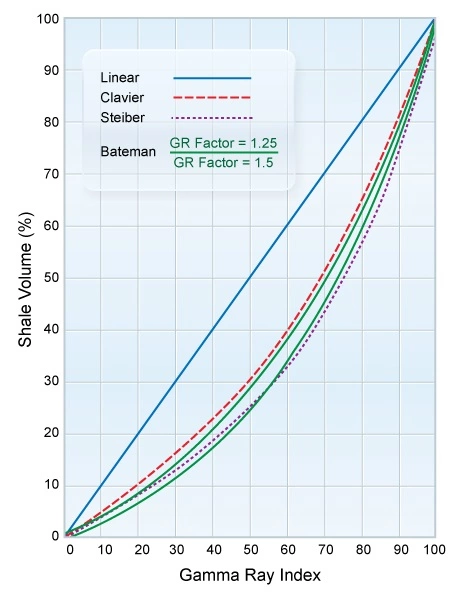
volume relationships
Larionov (1969) suggested that different shale volume calculation equations should be used based on the geological age of the logged rock formations, as follows:
![]() for young rocks of Tertiary age
for young rocks of Tertiary age
![]() for rocks of pre-Tertiary age
for rocks of pre-Tertiary age
A comparison of the two Larionov shale volume calculations with other commonly used techniques for estimating the shale volume is illustrated in Figure 3.
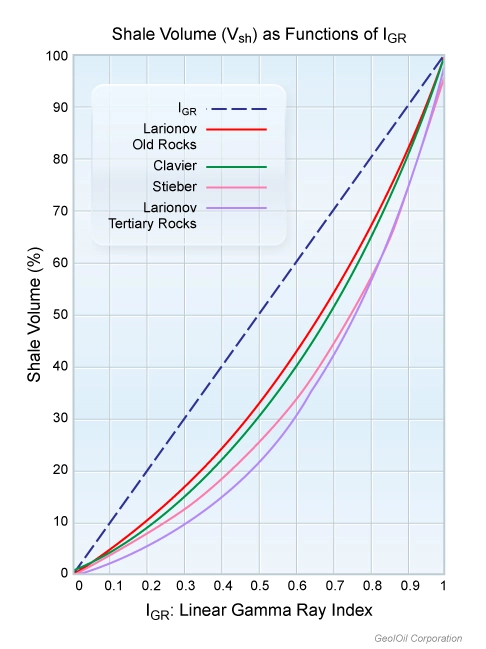
other commonly used equations
Figure 4 is an example of the application of the Larionov shale volume estimation technique in a well in the Russian Federation.
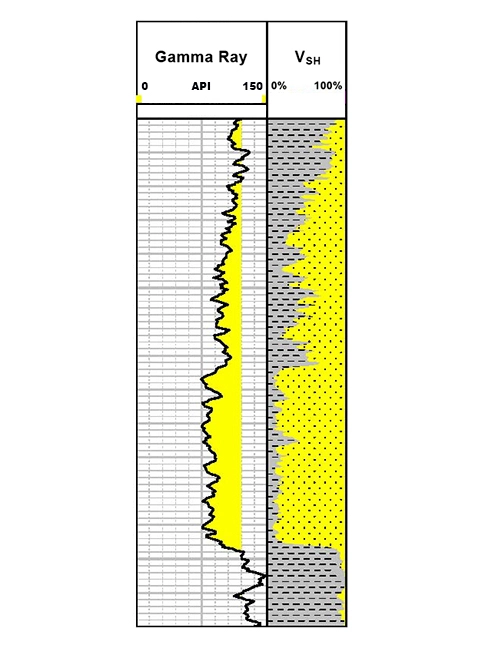
pre-Tertiary rocks in the Russian Federation
Figure 5 compares, in the left-hand track, the shale volume estimates made by three different methods on a reservoir by Geoloil: the linear IGR index (red), Larionov (green) and neutron-density difference (blue).
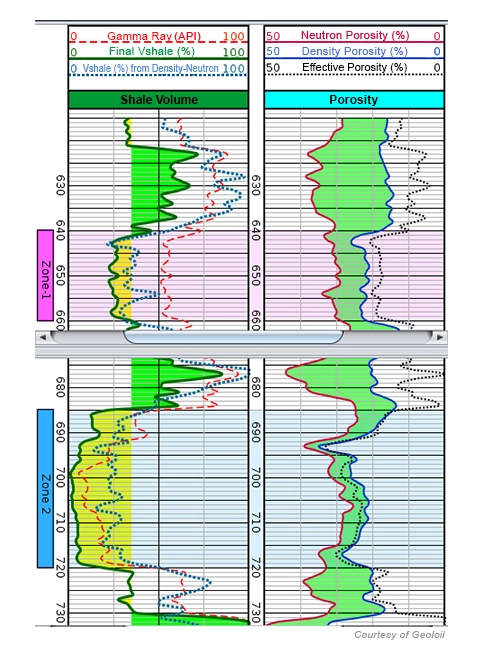
There is no simple, universal answer as to which is the best method for shale volume determination. A sound interpretation process is to compute various shale volume estimates using a number of these different equations and techniques, and then analyze full diameter core data to ascertain which shale volume model best fits with the core analysis data. In the absence of full diameter core data, rotary or percussion sidewall cores may be a partial substitute, provided that sufficient sidewall cores covering the full range of rock types in the logged section have been acquired. The petrophysicist should also generate alternative shale volume estimates that do not use gamma ray logs to support the analysis and interpretation decision, remembering the inherent tendency of some techniques to overestimate the shale volumes.
Estimating the Lithology and Shale Volume Content From Spectral Gamma Ray Logs
Figure 6 illustrates a typical natural gamma ray spectral log display.
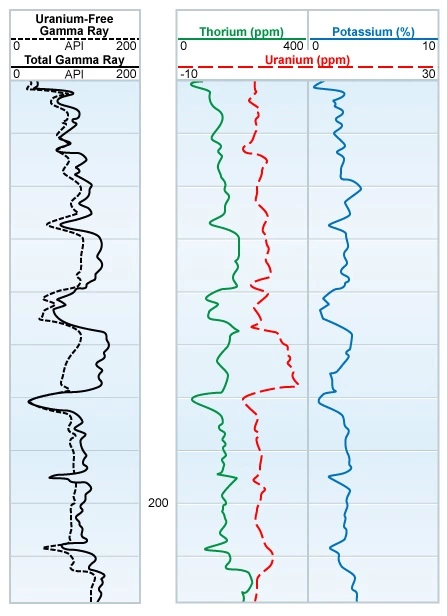
In the left-hand track, both the total gamma ray activity, often designated by the mnemonic SGR, and a “uranium-free” version, of(ten designated by the mnemonic CGR, of the total activity are displayed. The units for the composited gamma ray data are API units. In the two right-hand tracks, the concentrations of uranium, (U), thorium, (Th), and potassium, (K), are displayed.
A useful interpretation approach is to use the ratios of the elemental concentrations as indicators of either the formation properties, the formation type or the depositional environment.
- The thorium/uranium ratio varies with the depositional environment—it is highest for a continental, oxidizing environment and lowest for a marine, reducing environment that tends to produce black shales. It can thus be used for estimating the distance to ancient shorelines, or the location of an area of rapid uplift during the time of sediment deposition. Similarly, stratigraphic correlations of marine transgressions or regressions are possible using the thorium/uranium ratio.
- The uranium/potassium ratio has often been found to be a good indicator of the potential of source rocks for conventional hydrocarbon resources, or for reservoirs in some unconventional resource plays. The ratio also correlates well with vugs and natural fracture systems and, at times, with hydrocarbon “shows” in both clastic and carbonate conventional reservoirs.
- The thorium/potassium ratio has proved particularly useful in clay typing, because it increases from glauconite through to bauxite (Figure 7). Glauconite is a diagnostic mineral indicative of continental shelf—marine depositional environments with slow rates of sediment accumulation.
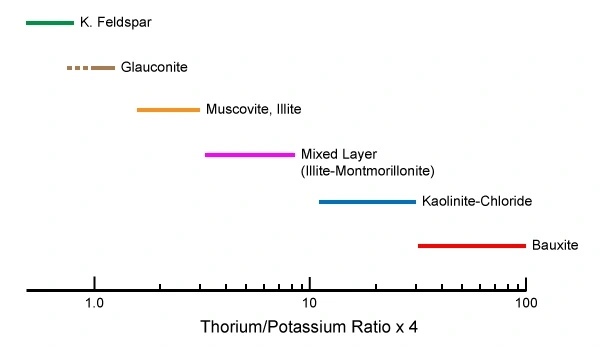
Alternatively, the thorium versus potassium crossplot may be a guide to the rock type (Figure 8).
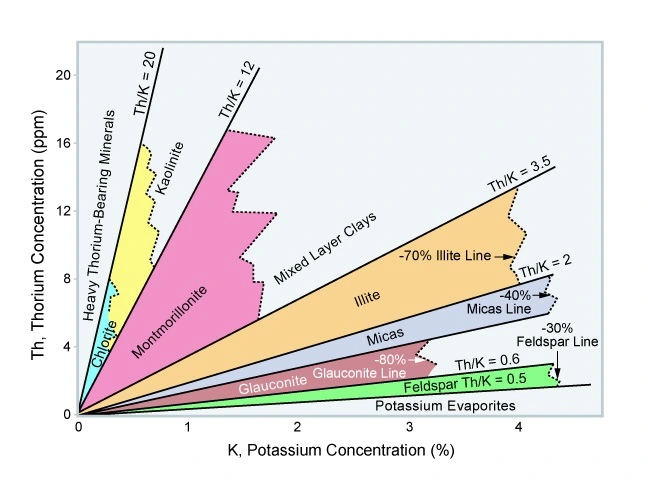
If the photoelectric factor (ρe) data from a density log are available, then crossplots of potassium versus the photoelectric factor (Figure 9) and the thorium/potassium ratio versus the photoelectric factor (Figure 10) can assist with lithological and mineralogical studies.

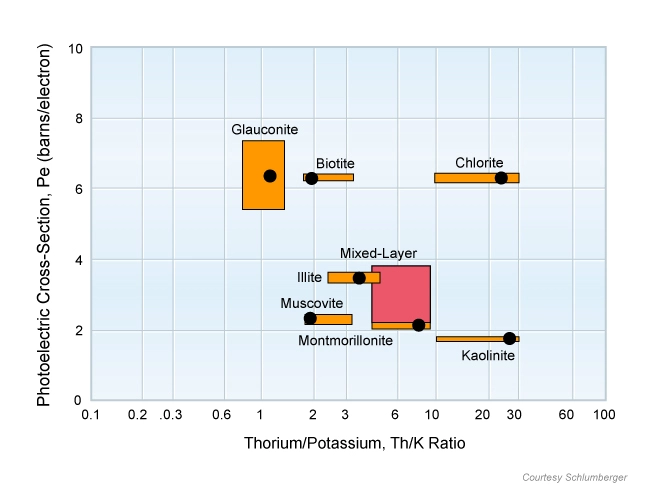
Digital spectral gamma ray logs can be easily plotted in a number of different formats for lithological and mineralogical identification (Figure 11).
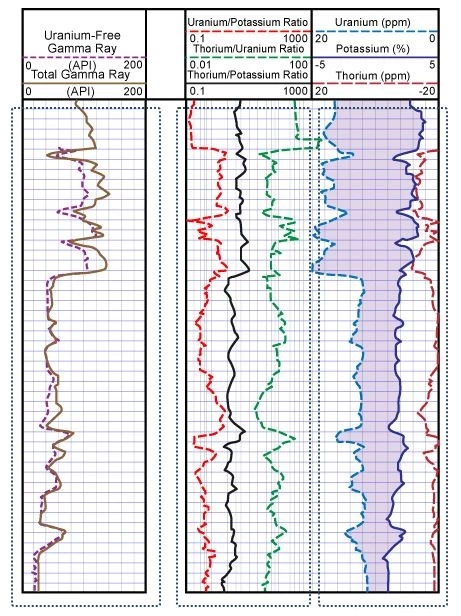
The left-hand track shows the total gamma ray, together with a uranium-free curve. The middle track gives three ratios: uranium/potassium, thorium/uranium and thorium/potassium, U/K, Th/U, and Th/K. The right-hand track shows a coded area that represents the formations with both the highest potassium and the highest thorium content, generally shale.
 Petro Shine The Place for Oil and Gas Professionals.
Petro Shine The Place for Oil and Gas Professionals.



